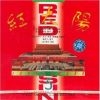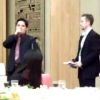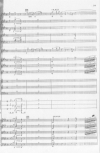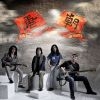Illustration:
ill. 2.3
Author:
Author: Zhou Linfa 周林发
Date:
1974
Genre:
drawing, illustration
Material:
scan, paper, grayscale; original source: drawing, paper, black-and-white
Source:
Zhaoxia 1974.4:3-7, “Pujiang anpan de zhange” 浦江岸畔的战歌 (Battle song at the Pujiang shores), 1974.4:3.
Inscription:
浦江岸畔的战歌 ——— 上海市群众歌咏大会 '自力更生' 专场侧记 周林发 春风浩荡、柳枝吐翠的春夜,浦江两岸 是如此。。!从工厂到农村,从机关到学 校,处处烈火熊熊,战歌阵阵。广大工农兵群众正在批林批孔战场上勇猛冲杀。这座 具有光荣革命传统的英雄城市响彻了战斗 声象惊天的春雷,歌声象动地的战鼓。激情。。湃,气壮山河。全场爆发出雷鸣般的掌声,欢迎造舶工入'来一个!', '再来一 个' !这来自孕育中因第一代造船工人的船台的歌声是多么动人心弦呵!
Keywords:
Red Sun Fever, Red is the East, omnipresence, Cultural Revolution, battle song, waves, warship, peasants, soldiers, workers, hero,masses
Singing the most efficient Battle Song: Red is the East (Chang zhan'ge: Dongfang hong 唱战歌:东方红)

As it was considered “the most powerful song” (Chinese Literature 1970.1:108-113), or a most efficient “battle song” 战歌 (Zhaoxia 1974.4:3, ill. 2.3), many stories, comics and other publications during the Cultural Revolution would mention it and the happiness which its message entailed for China. One such story, for example, describes a sent-down youth, quite eager to recreate his village after the model of model village Dazhai 大寨 (in Eastern Shanxi), who writes that every time he would be hearing Red is the East, a smile would immediately appear on his face 家属听了这声, 露出了幸福的笑容 (Geming Jiebanren 1974.3:44 “春山常青”).



































